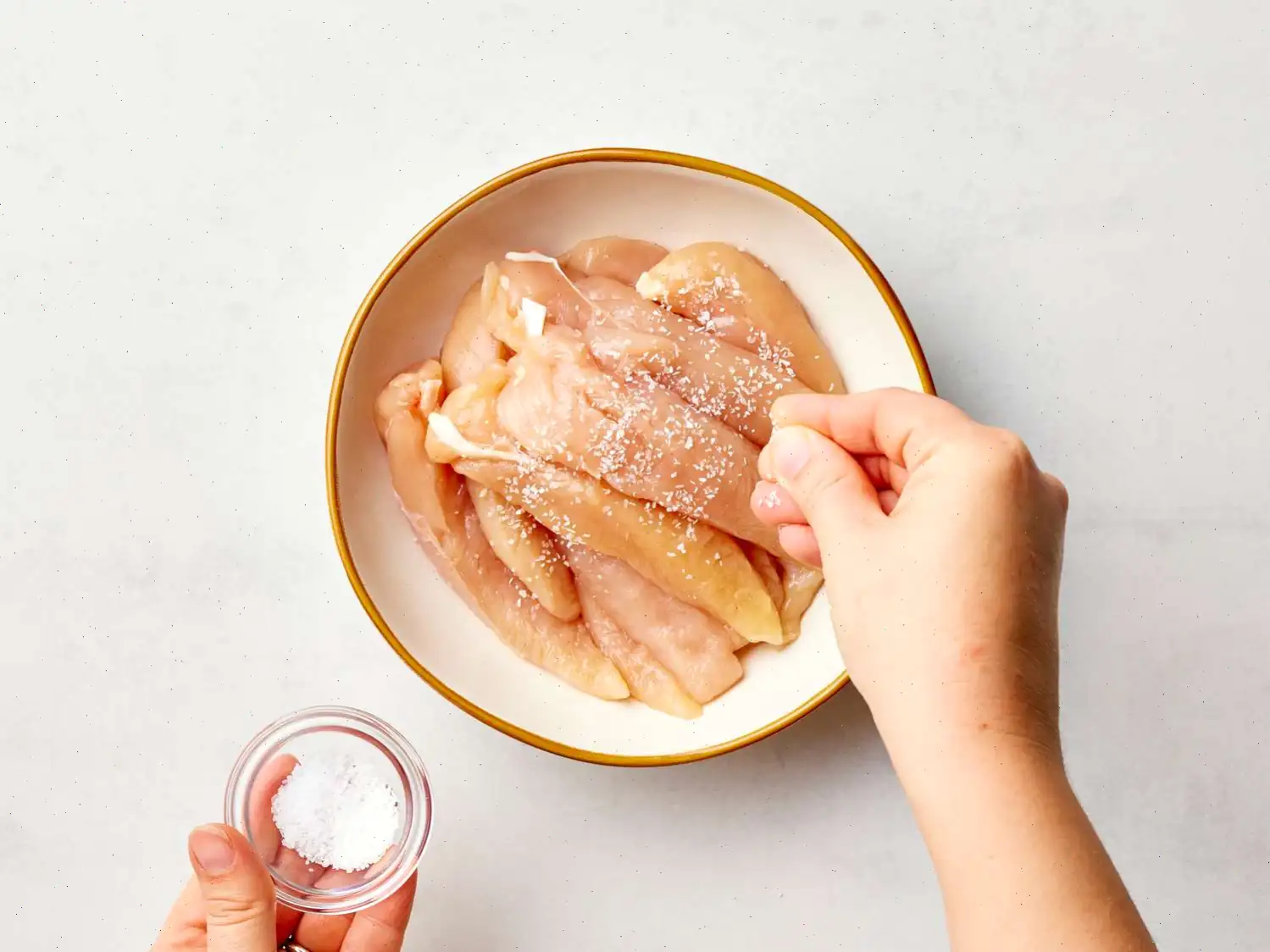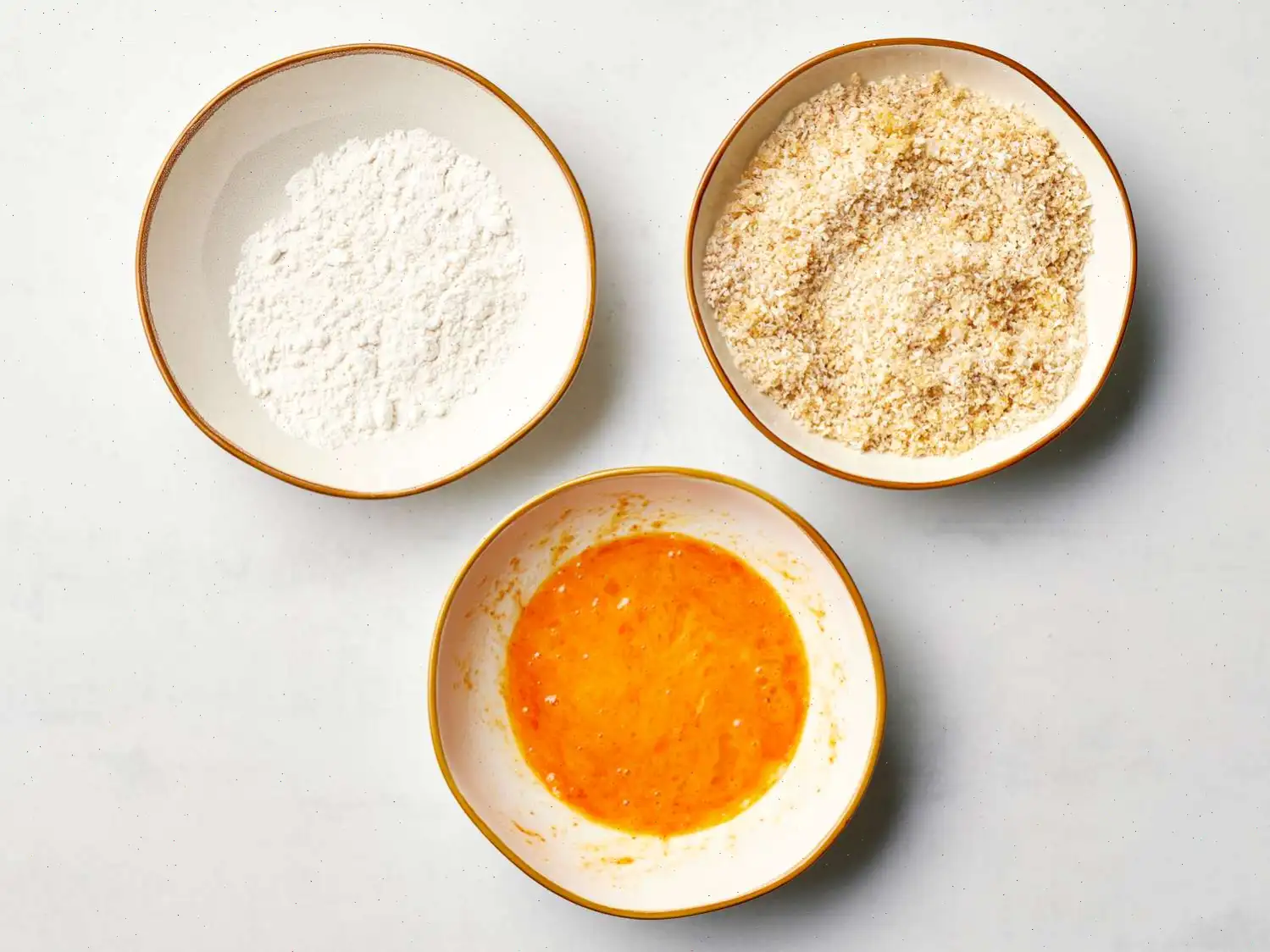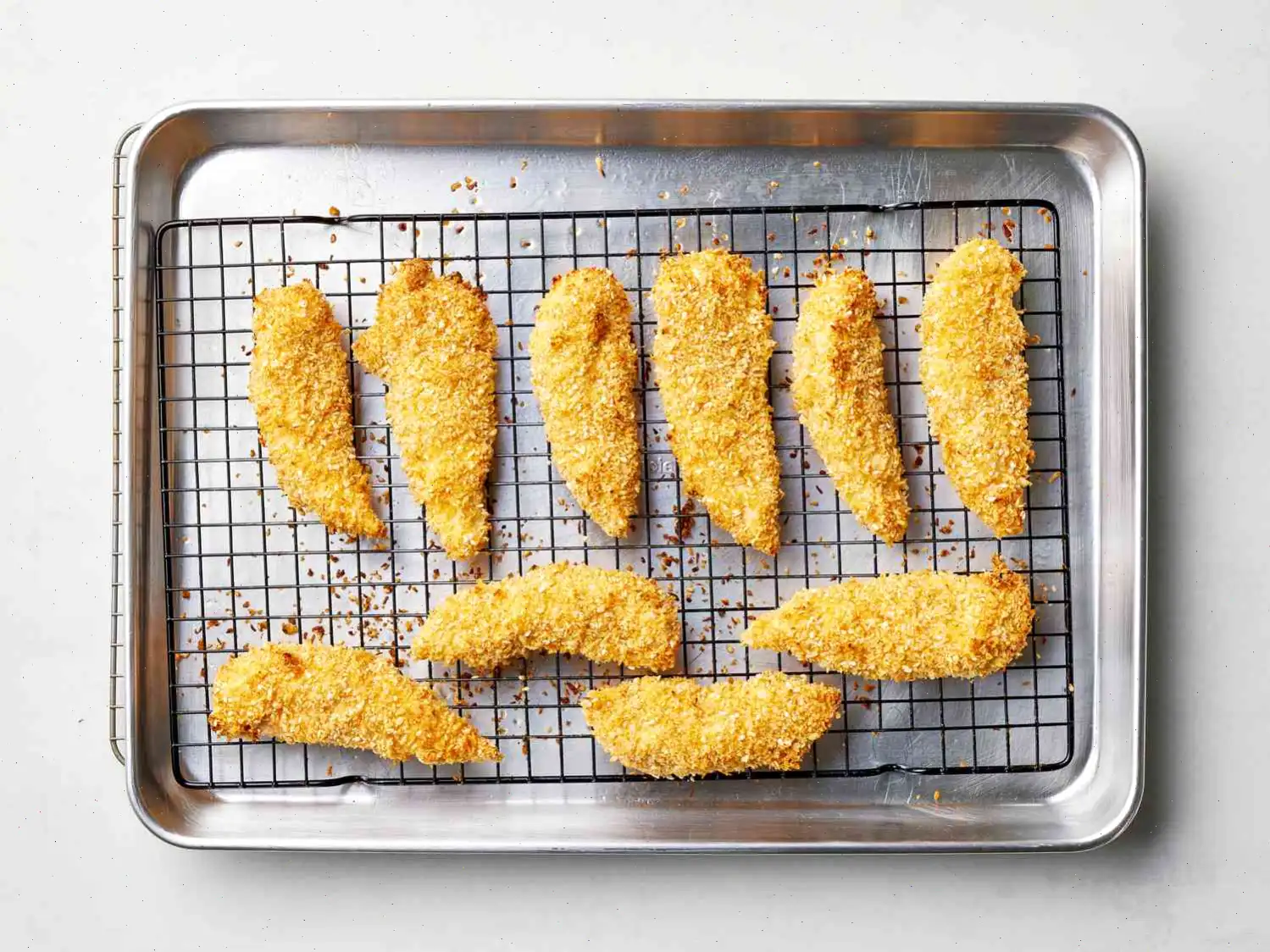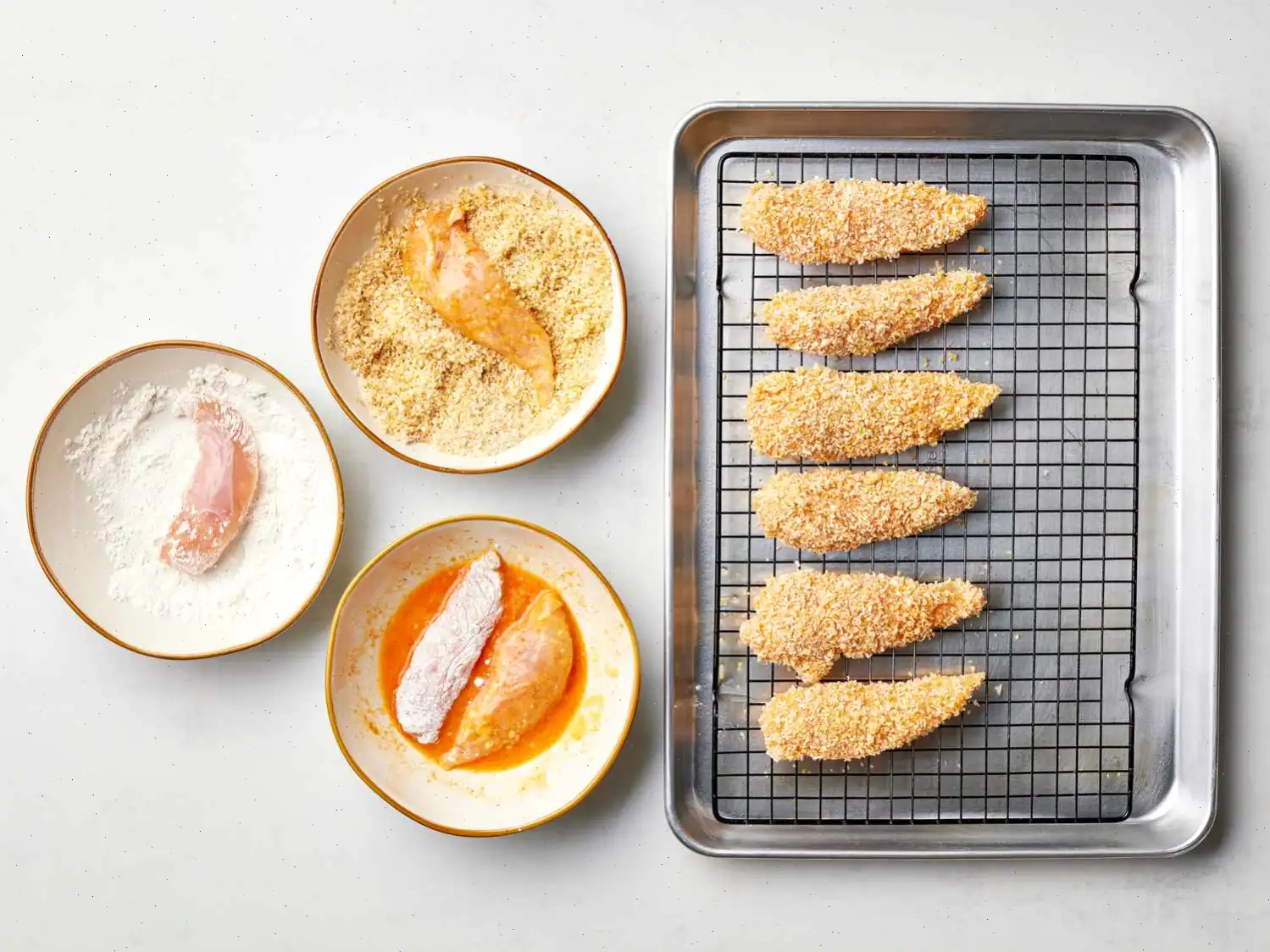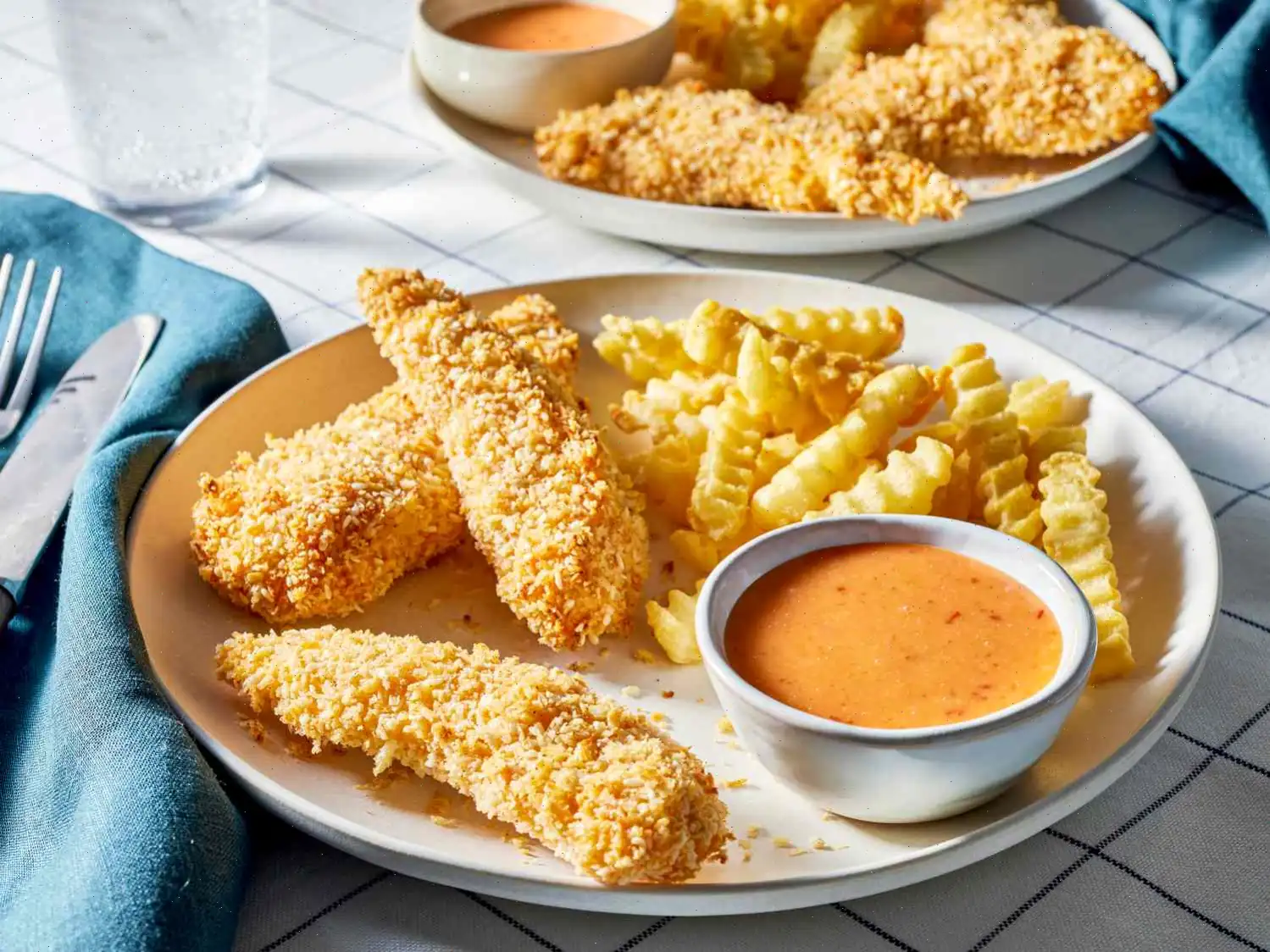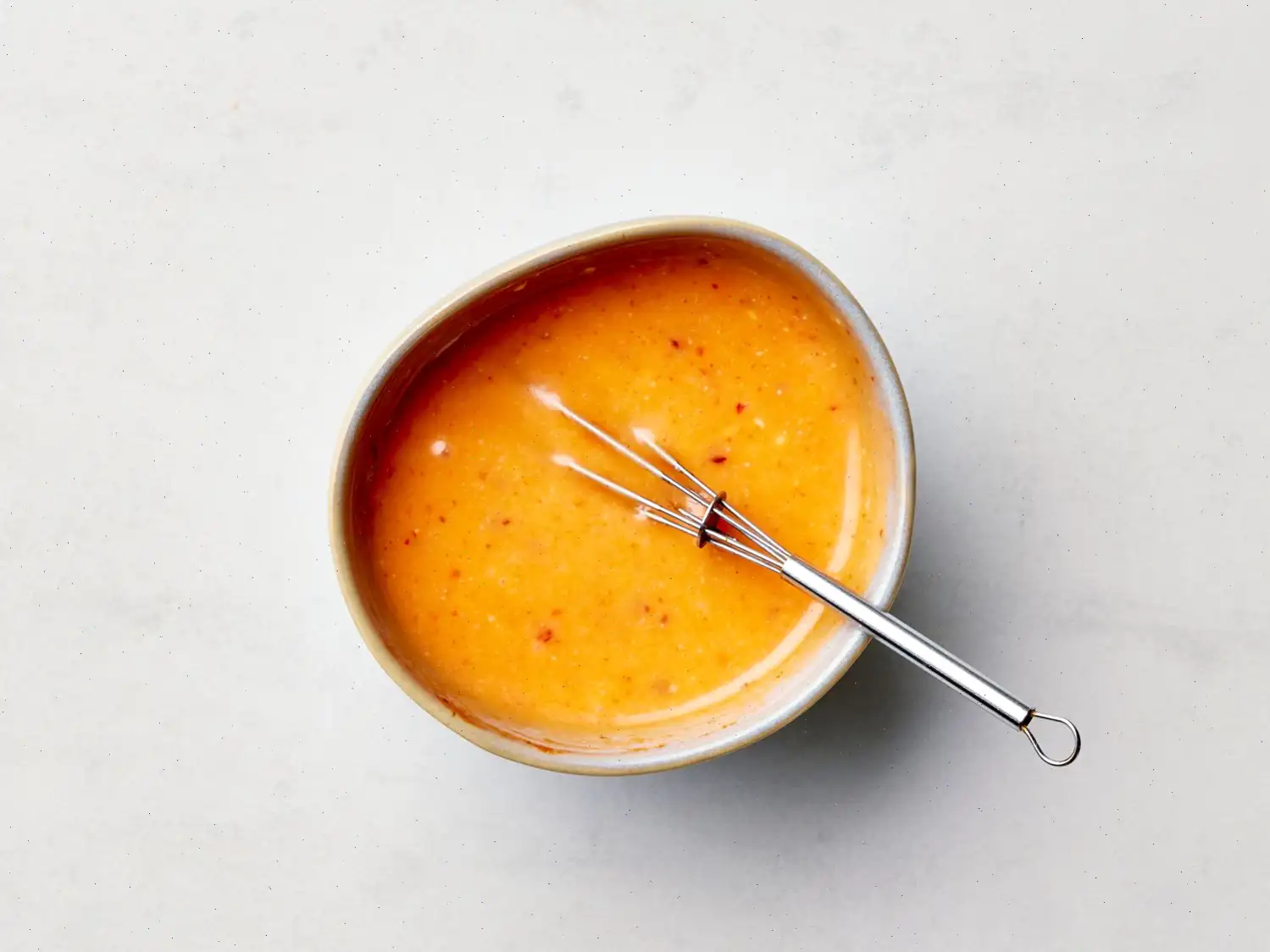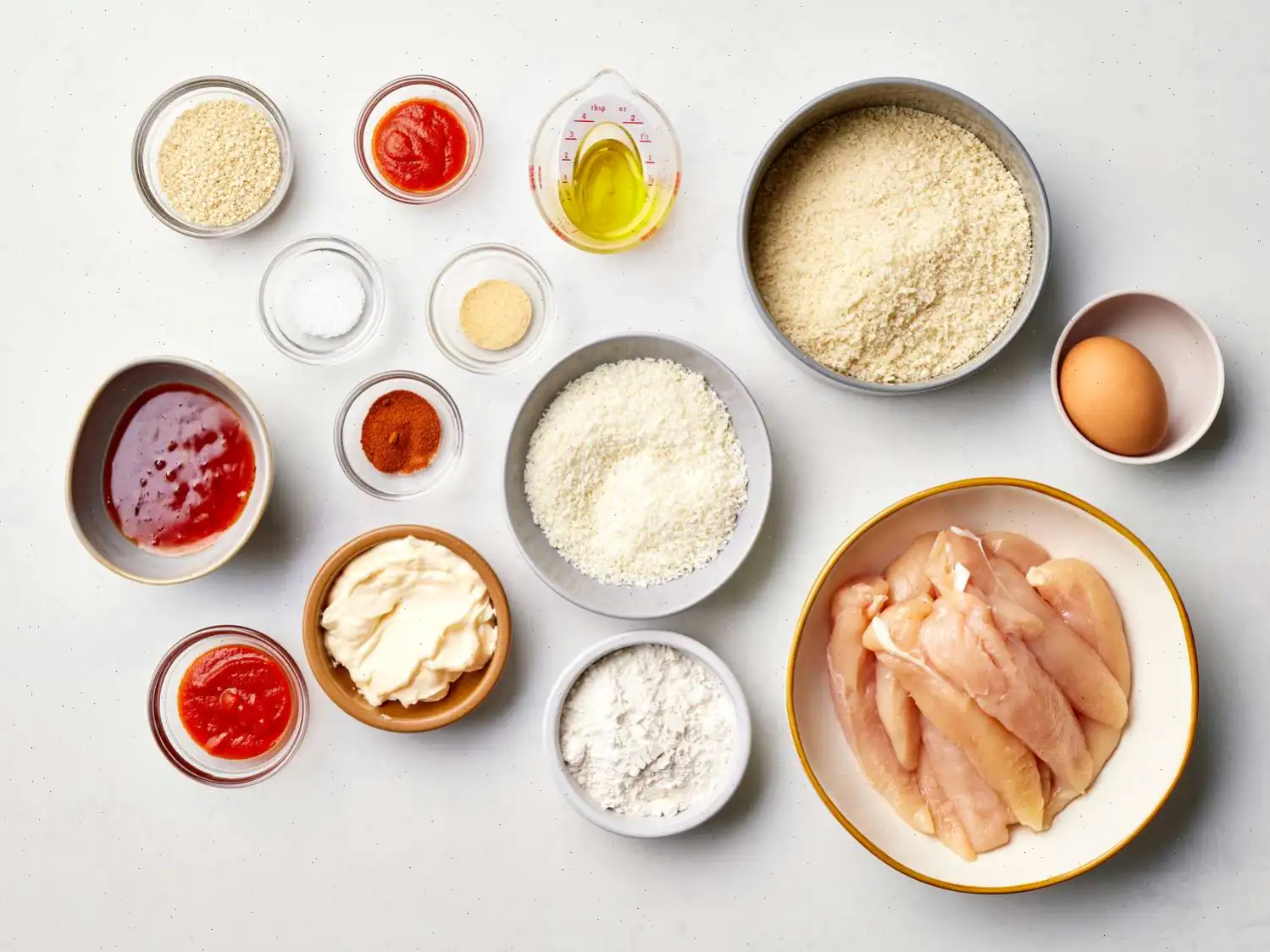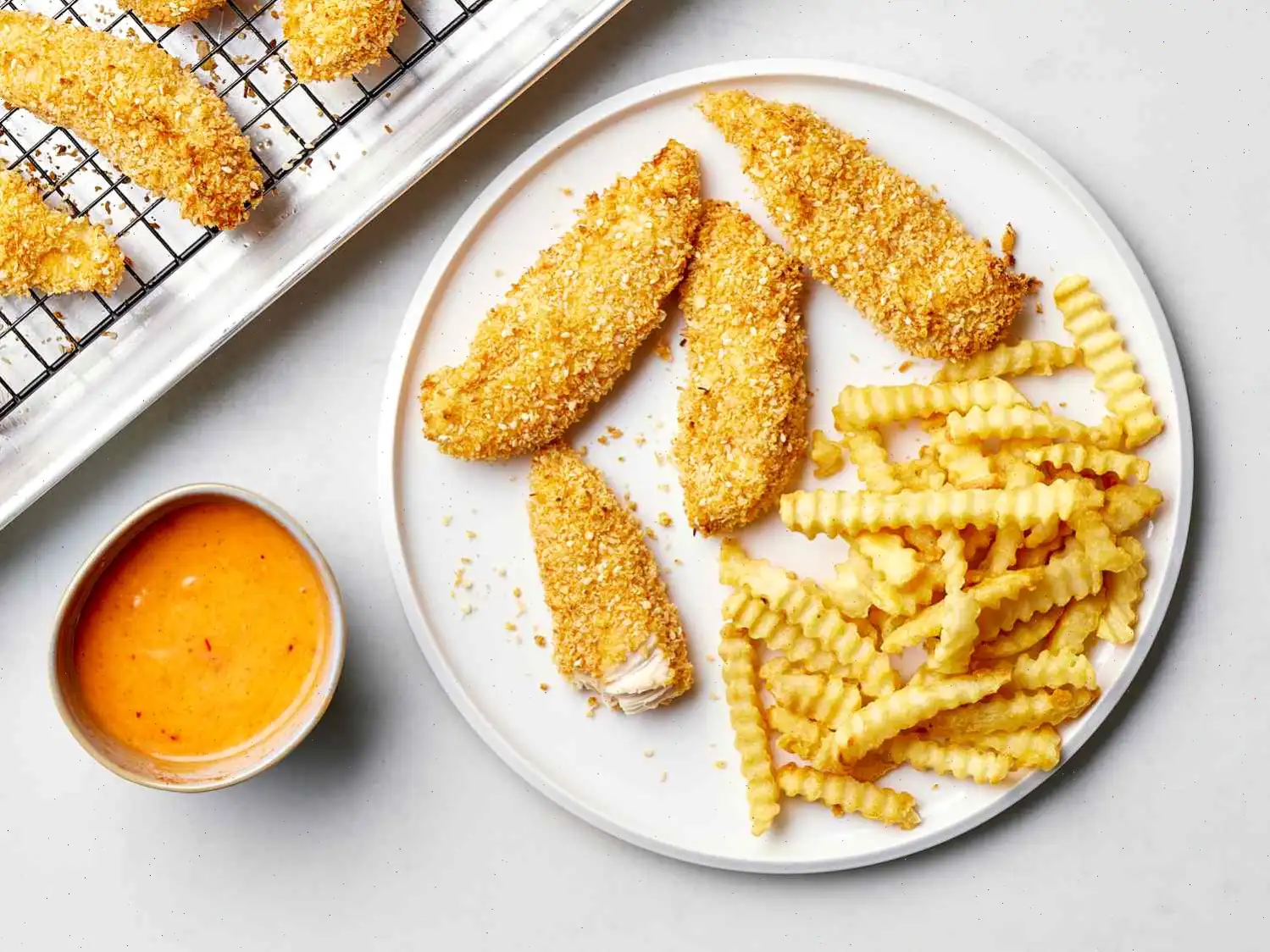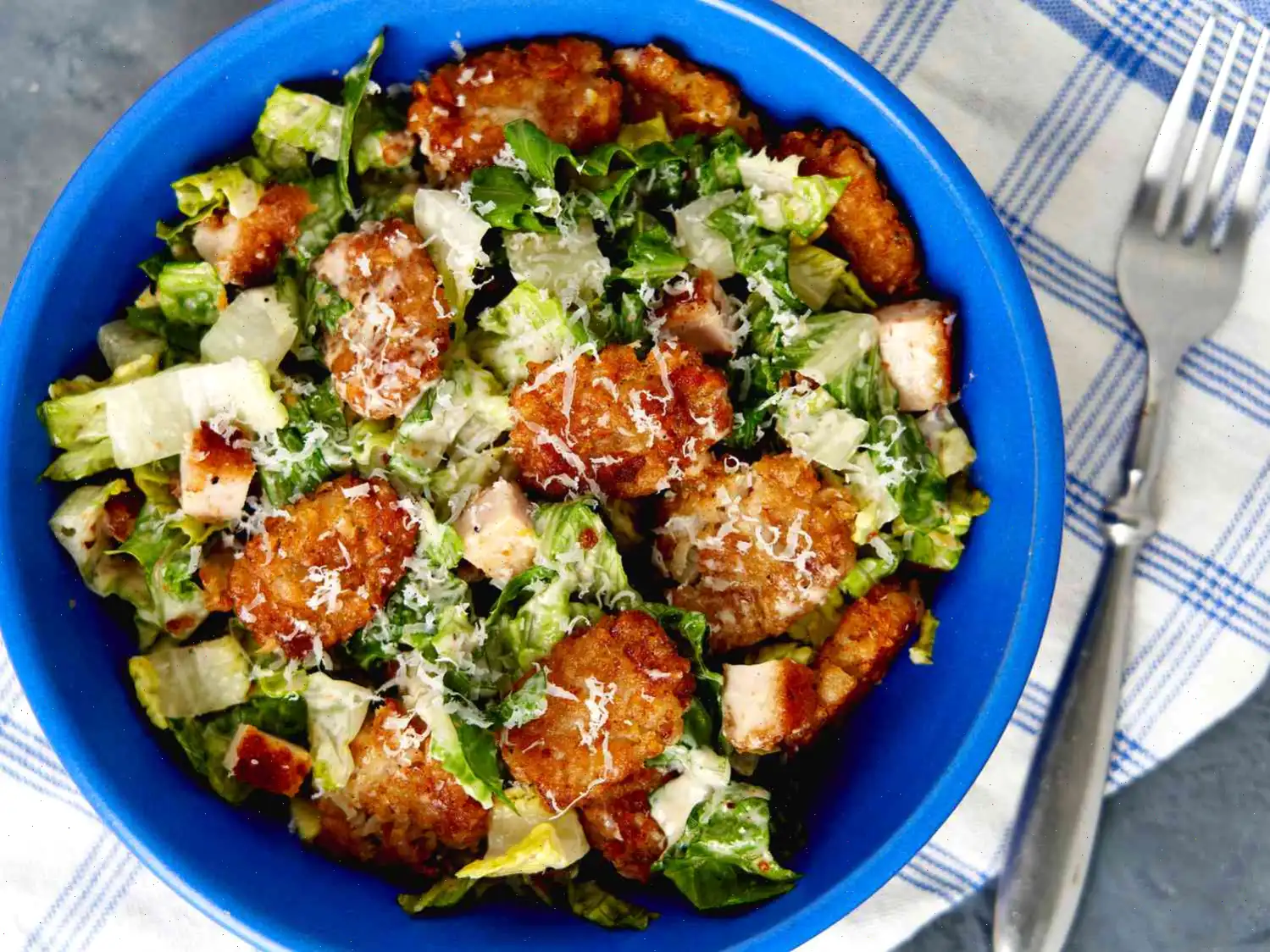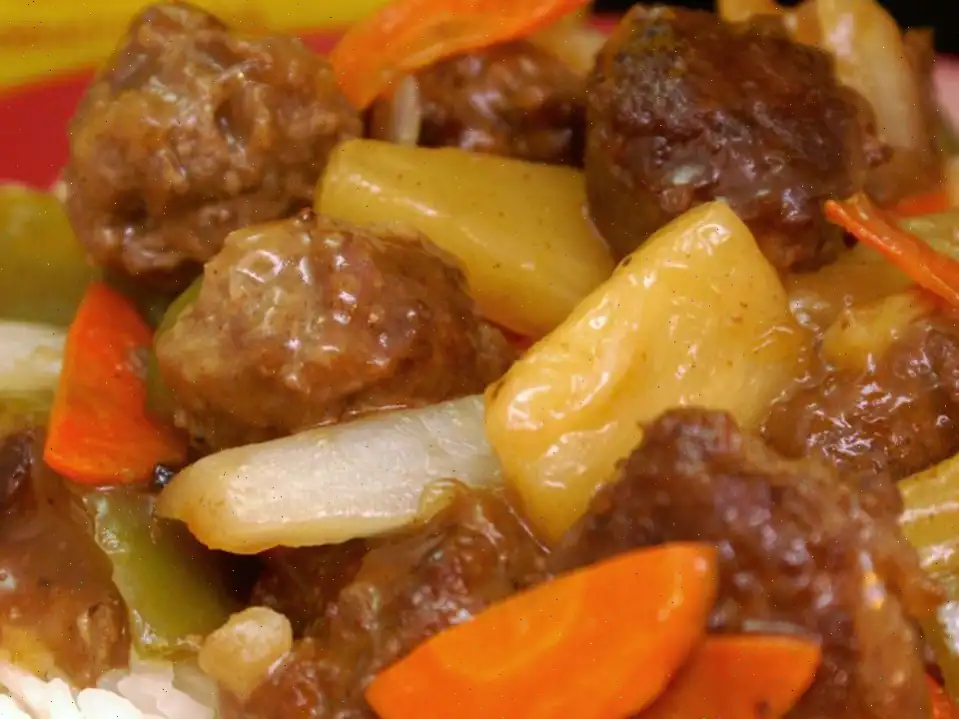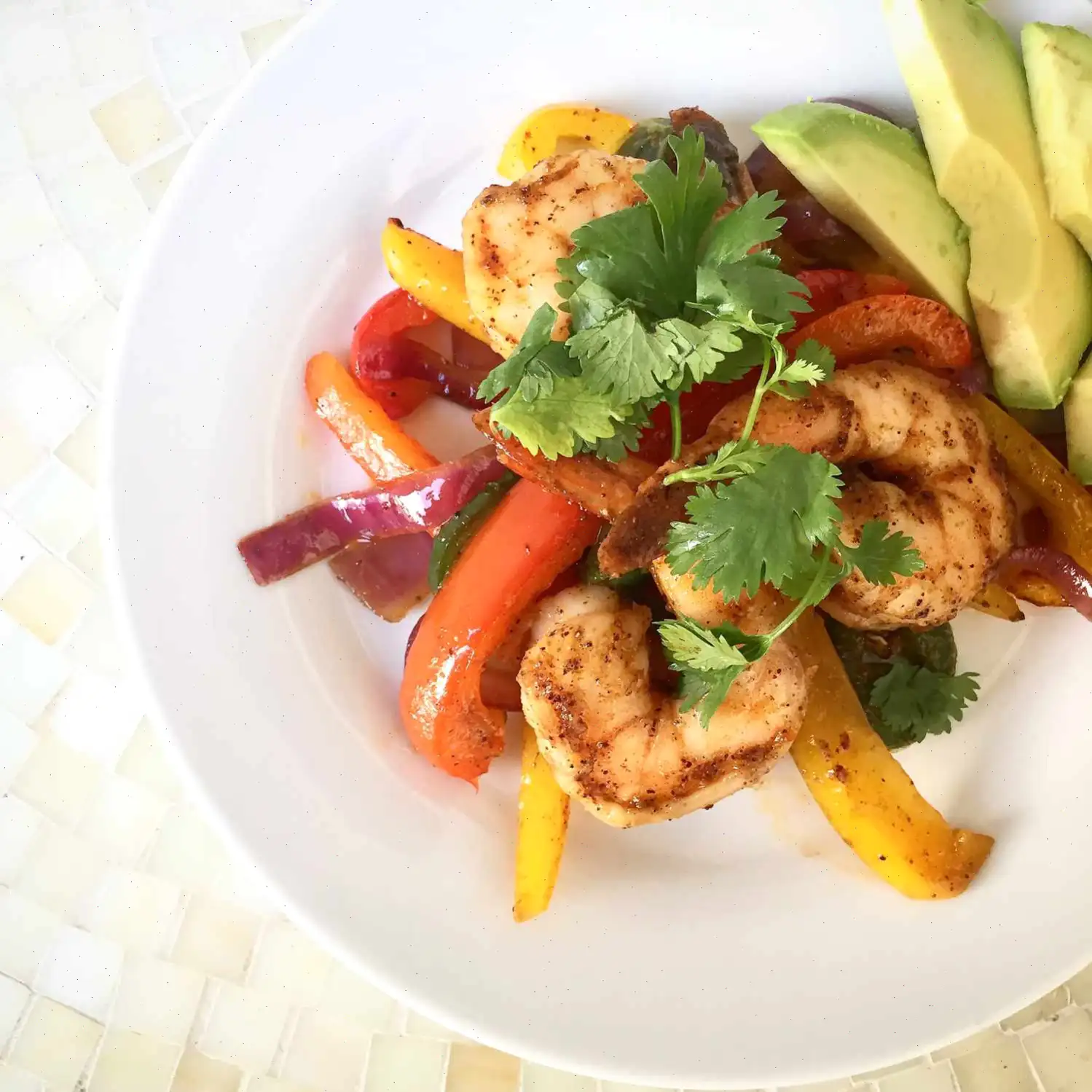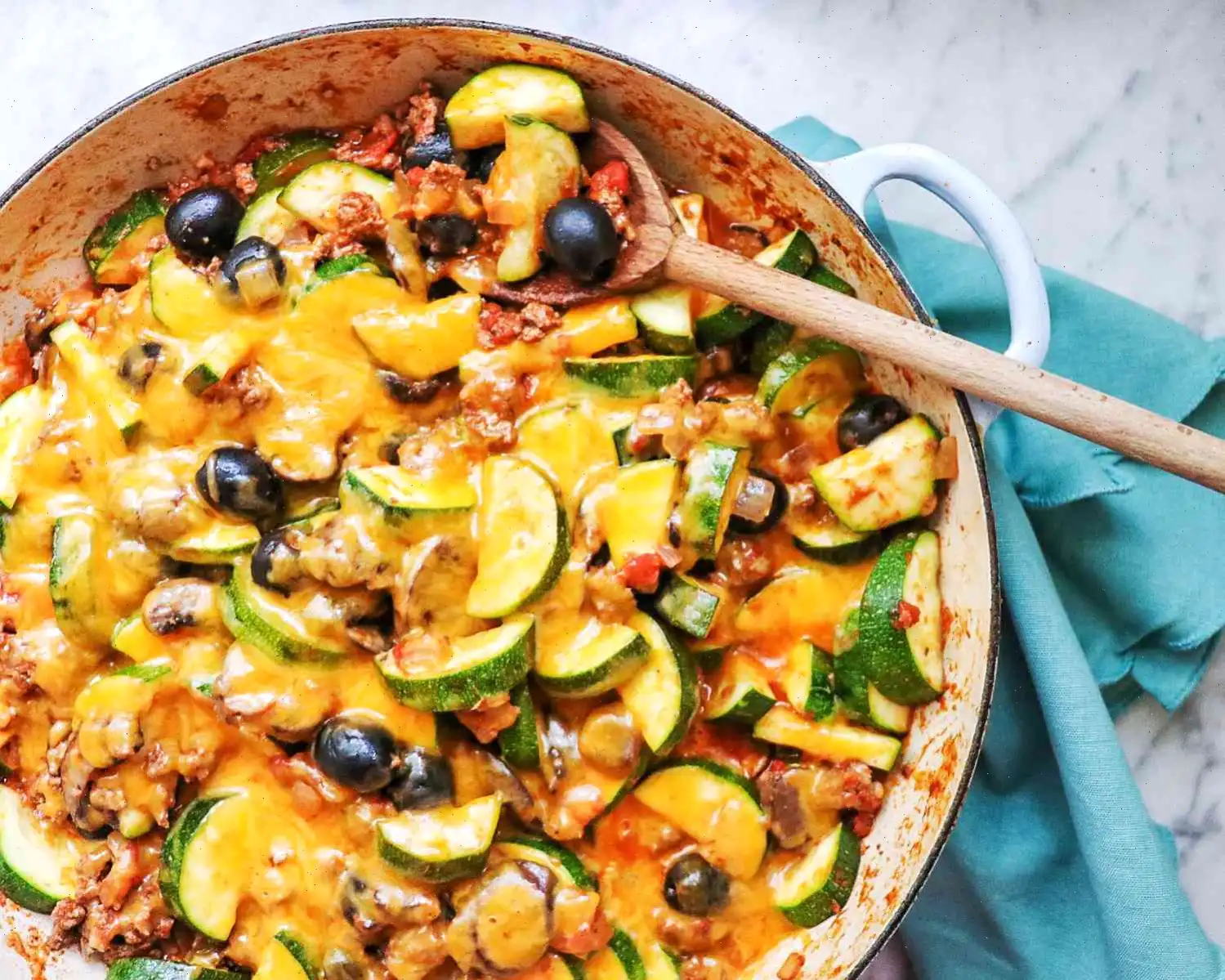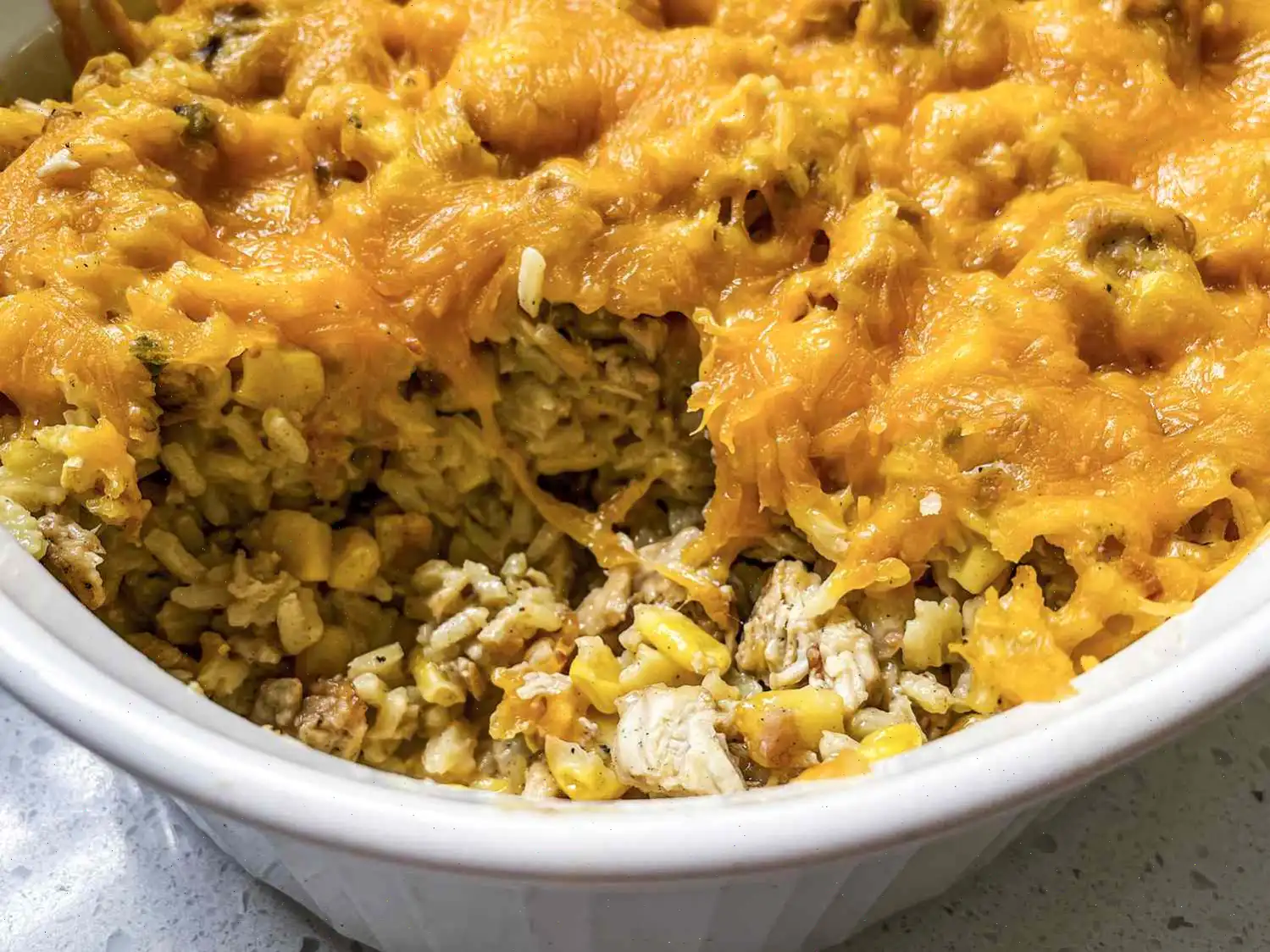
Coconut Chicken Tenders Recipe
Ingredients
- 1 pound boneless chicken breast tenderloins or skinless, boneless chicken breasts, cut into 1-inch thick strips
- 3/4 teaspoon salt, divided
- 3 tablespoons flour
- 1 large egg
- 1 1/2 teaspoons Sriracha
- 1 cup panko bread crumbs
- 1/2 cup unsweetened shredded coconut
- 2 tablespoons sesame seeds
- 1/2 teaspoon paprika
- 1/2 teaspoon garlic powder
- 1 tablespoon olive oil
- Dipping Sauce
- 1/3 cup mayonnaise
- 1/4 cup Asian sweet chili sauce
- 1 tablespoon Sriracha
Directions
- Preheat the oven to 450F (230C). Place a wire rack on a 18x13-inch rimmed baking sheet and lightly coat it with nonstick cooking spray.
- Sprinkle the chicken tenders with 1/2 teaspoon of salt, then set them aside.
- In a small shallow dish, place the flour. In another shallow dish, whisk together the egg and Sriracha. In a third shallow dish, combine the panko, shredded coconut, sesame seeds, paprika, garlic powder, and the remaining 1/4 teaspoon salt. Drizzle the panko mixture with olive oil and mix it until everything is evenly coated.
- Working one at a time, dip the chicken tenders into the flour, shaking off the excess. Next, dip them into the egg mixture to coat. Then dredge them in the panko mixture, pressing gently to make sure it sticks to all sides. Place each coated tender on the prepared wire rack.
- Repeat the process with the remaining chicken tenders.
- Place the baking sheet in the oven and bake for about 15 minutes, or until the chicken is cooked through (internal temperature of 165F or 74C) and the coating is golden brown.
- While the chicken is baking, prepare the dipping sauce by mixing together the mayonnaise, Asian sweet chili sauce, and Sriracha in a small bowl.
- Once the chicken tenders are done, remove them from the oven and serve them hot with the dipping sauce. Enjoy!
Nutrition Facts (per serving)
- Calories: 623
- Total Fat: 33g (42% Daily Value)
- Saturated Fat: 11g (54% Daily Value)
- Cholesterol: 151mg (50% Daily Value)
- Sodium: 975mg (42% Daily Value)
- Total Carbohydrate: 38g (14% Daily Value)
- Dietary Fiber: 4g (14% Daily Value)
- Total Sugars: 12g
- Protein: 43g (86% Daily Value)
- Vitamin C: 3mg (3% Daily Value)
- Calcium: 121mg (9% Daily Value)
- Iron: 4mg (23% Daily Value)
- Potassium: 486mg (10% Daily Value)

Origin Story: The roots of coconut chicken tenders can be traced to the fusion of tropical flavors and American comfort food. Coconut, a staple in many tropical cuisines, pairs perfectly with the mild flavor of chicken, adding a crunchy, sweet, and slightly nutty layer. While the concept of breaded and fried chicken tends to be universally loved, the introduction of coconut into the breading mixture is believed to have originated in the southern United States, where tropical ingredients began to influence the culinary landscape. Over time, this dish has gained popularity in various forms, from casual dining menus to family dinner tables, thanks to its easy preparation and mouthwatering flavor profile. Today, it is a favorite in many households, especially those craving a touch of the tropics in their meal.
Regional Variations: The concept of coconut chicken tenders has regional variations that highlight different local ingredients and preparation styles. In places like Florida, where coconut trees abound, the dish often incorporates a variety of fresh, local spices and seasonings. In contrast, regions like the Pacific Islands or Southeast Asia might infuse the dish with additional tropical fruits, such as mango, or pair it with exotic dipping sauces made from ingredients like tamarind or lime. Some variations even include a sprinkling of finely chopped cilantro or mint for a fresh, aromatic twist. While the basic concept of a coconut-crusted chicken tender remains the same, the regional influence brings unique flavors to each dish.
Differences from Similar Dishes: Coconut chicken tenders stand out from other breaded chicken recipes, such as classic fried chicken tenders, due to the distinctive coconut crust. Traditional breading often consists of a combination of flour, eggs, and breadcrumbs, while coconut chicken tenders incorporate shredded coconut, which imparts a tropical sweetness and crispiness that is unmatched by plain breadcrumbs. Additionally, the use of sriracha and sweet chili sauce in the dipping sauce provides a sweet and spicy contrast that makes the coconuts natural flavors pop. In comparison, classic tenders are usually served with a simple ketchup or ranch dip, which lacks the bold tropical elements that coconut chicken offers.
Where to Serve Coconut Chicken Tenders: Coconut chicken tenders are versatile and can be served in a variety of settings. They make an excellent appetizer for tropical-themed dinner parties or a fun and flavorful main course for family gatherings. Many restaurants in coastal regions, particularly those with Caribbean or South Pacific influences, serve this dish as a part of their entre menu. The tenders can also be enjoyed as a finger food at casual get-togethers or paired with a fresh salad for a lighter meal. Whether at a beachside caf or a backyard barbecue, coconut chicken tenders are a crowd-pleaser that transports you to sunnier destinations.
Interesting Facts: Did you know that coconut is one of the oldest cultivated plants in the world? Originating from the Indo-Pacific region, the coconut has been a key ingredient in many cultures' diets for centuries. Coconut meat, water, and milk are prized for their versatility, and the fruit is celebrated for its nutritional benefits, including high fiber and healthy fats. The use of coconut in cooking dates back thousands of years, but its pairing with chicken in a breaded form is a relatively recent innovation. Also, the sweet and savory combination of coconut and sriracha used in this dish has become increasingly popular in modern kitchens, bringing a global twist to a classic comfort food.
FAQ about Coconut Chicken Tenders Recipe
Comments
Linda Edwards
09/25/2024 07:59:28 AM
Here is the rewritten review: It's winter, but living in Florida means the air conditioner is still on. I decided to use the toaster oven for dinner tonight. I baked the tenders at 425°F for 10 minutes (450°F seemed too high) and tested them with a meat thermometer. The tenders turned out perfectly cooked. I prepared the delicious sauce earlier in the day, set up my breading station, and dinner was ready in no time. This meal was simple but incredibly flavorful for a weeknight dinner. I appreciate the recipe and will definitely make it again.


